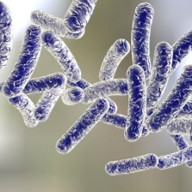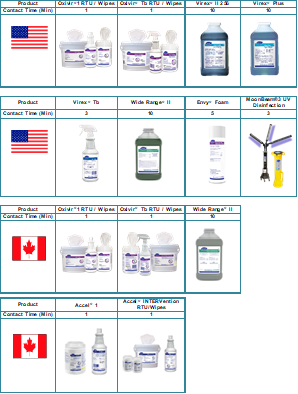
Legionella 2in
General Description
Legionella is a gram-negative bacterium that exists naturally in the environment, specifically in lakes, streams and other bodies of water. In larger natural bodies of water, Legionella is typically not problematic because the water is constantly moving and does not have the opportunity to proliferate.
Unfortunately, building water systems can also be a reservoir for Legionella. Legionella grows best between 77°F–113°F (25°C–45°C) and where water is stagnant or slow moving (in plumbing, these areas are called “dead legs.”). Legionella can create and thrive in biofilms, slimes and sludge that can form in building plumbing.
Legionellosis is the respiratory disease caused by Legionella bacteria. The bacteria can also cause a less serious condition called Pontiac fever with milder flu-like symptoms.
Significance
Legionella has caused significant outbreaks in many public spaces, including healthcare facilities, hotels and places of employment. Legionnaire’s disease (LD) was officially recognized in 1976 after an outbreak occurred at a hotel in Philadelphia where an American Legion convention was held (hence the name “Legionella”).
Adults over the age of 50, current and former smokers, and those with certain medical conditions are at greater risk of disease acquisition. Legionella can cause both community and healthcare-associated pneumonia and outbreaks. Healthy individuals exposed to Legionella do not usually become sick. Public health professionals estimate that the true incidence of Legionella is much higher than what is currently reported, given diagnostic challenges and milder cases that go undetected. In both countries, Legionella is considered a notifiable condition that should be communicated to public health officials per local, state/provincial and national guidelines.
Symptoms
The most common symptoms of Legionella bacterial infection are fever, headache, shortness of breath, a productive cough, loss of appetite, and/or muscle aches. Some individuals may also have diarrhea, confusion and nausea. This can lead to pneumonia. The incubation period is most commonly 5 to 6 days, with a range of 2 to 14 days. Pontiac Fever is also caused by Legionella but is generally a milder form of Legionnaires Disease with signs and symptoms of fever and muscle aches.
Transmission
No evidence of person-to-person transmission has yet been identified. It is generally associated with building water systems through untreated or inadequately treated water supply. For example, water cooling towers, ice machines, decorative fountains, or hot water tanks. The bacteria will enter the respiratory tract by breathing in mist (aerosolized) or small droplets (~ 1 – 5 microns), of water contaminated with Legionella.
Prevention
Legionella prevention and control is a multifaceted approach centered around a building’s water management. In June 2017, CMS (Center for Medicare/Medicaid Services) released a document for the Prevention of Legionnaire’s Disease in Healthcare Facilities. This requires all US healthcare facilities to form a Water Management Team which will develop processes for the maintenance of water supply, identification of new cases and an action plan. A case is reportable to the local health authorities in the United States. This document is a collaborative effort between ASHARE, CDC and CMS.
In Canada, Public Services and Procurement Canada (PSPC) has developed stringent Legionella control and prevention strategies. Individual provinces may have additional requirements in place.
Both US and Canadian public health organizations refer to the American Society of Heating, Refrigerating, and Air-Conditioning Engineers (ASHRAE) industry guidelines available here. ASHRAE is an international organization that develops standards and guidelines for HVAC systems, indoor air quality, and energy efficiency.
Environmental Cleaning and Disinfection
It is important to understand that while EPA- and DIN-registered hard, nonporous surface disinfectants may list specific Legionella pathogen kills claims, surface disinfection will not adequately prevent or control Legionella outbreaks. There are no enhanced cleaning and disinfection guidelines in healthcare spaces where suspect or confirmed Legionella patients and/or residents receive care.
Disinfection of the water, its storage and/or supply is necessary with specific treatment guidelines. Any public facing facilities, including healthcare facilities, should refer to their own policies, procedures and water management programs to prevent and control the spread of Legionella and other water-associated pathogens.
Legionella are non-spore forming Gram negative bacteria, susceptible to the following Diversey disinfectants on hard, nonporous surfaces (these products are not intended for disinfection of building water systems):

References:

